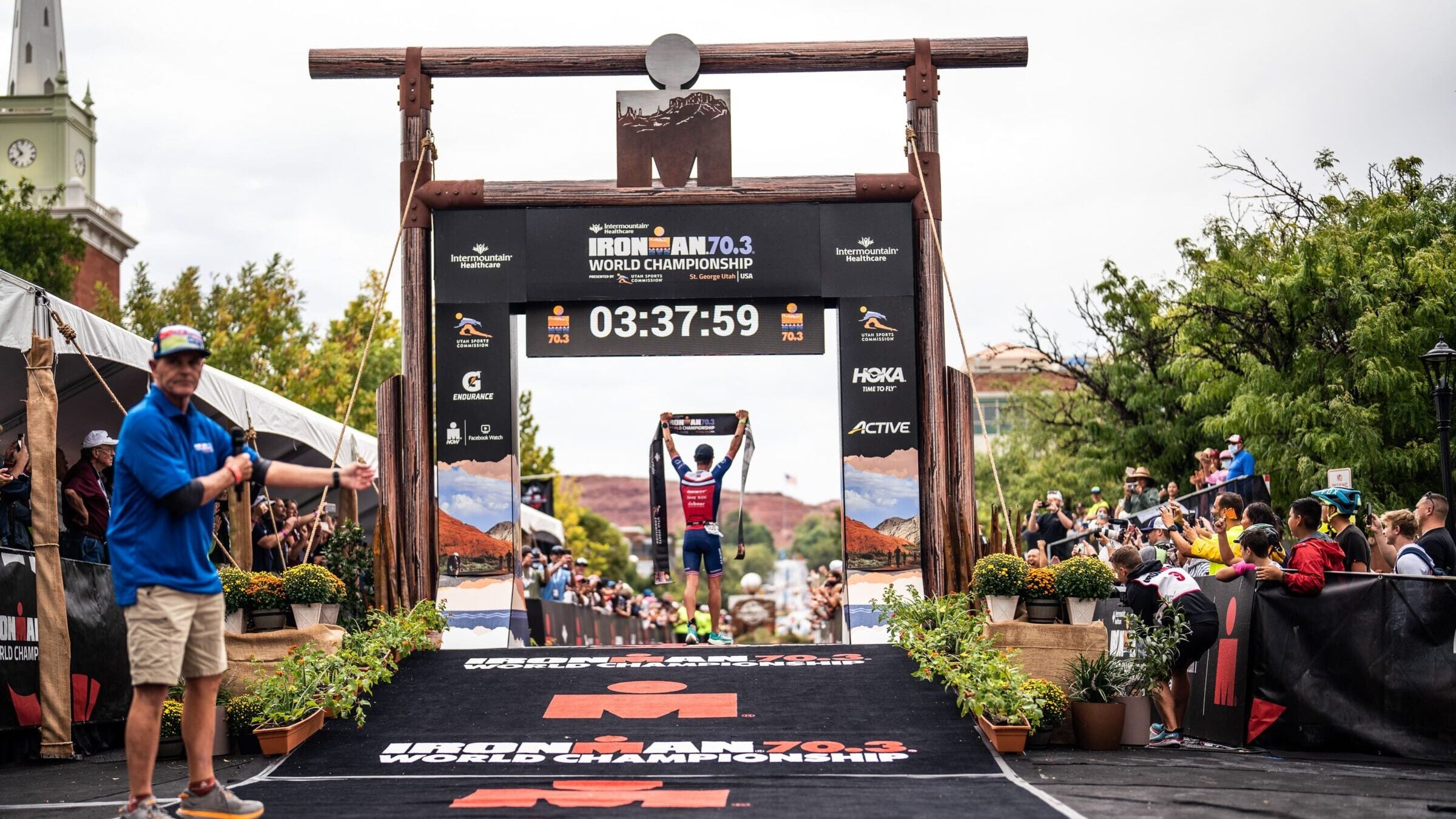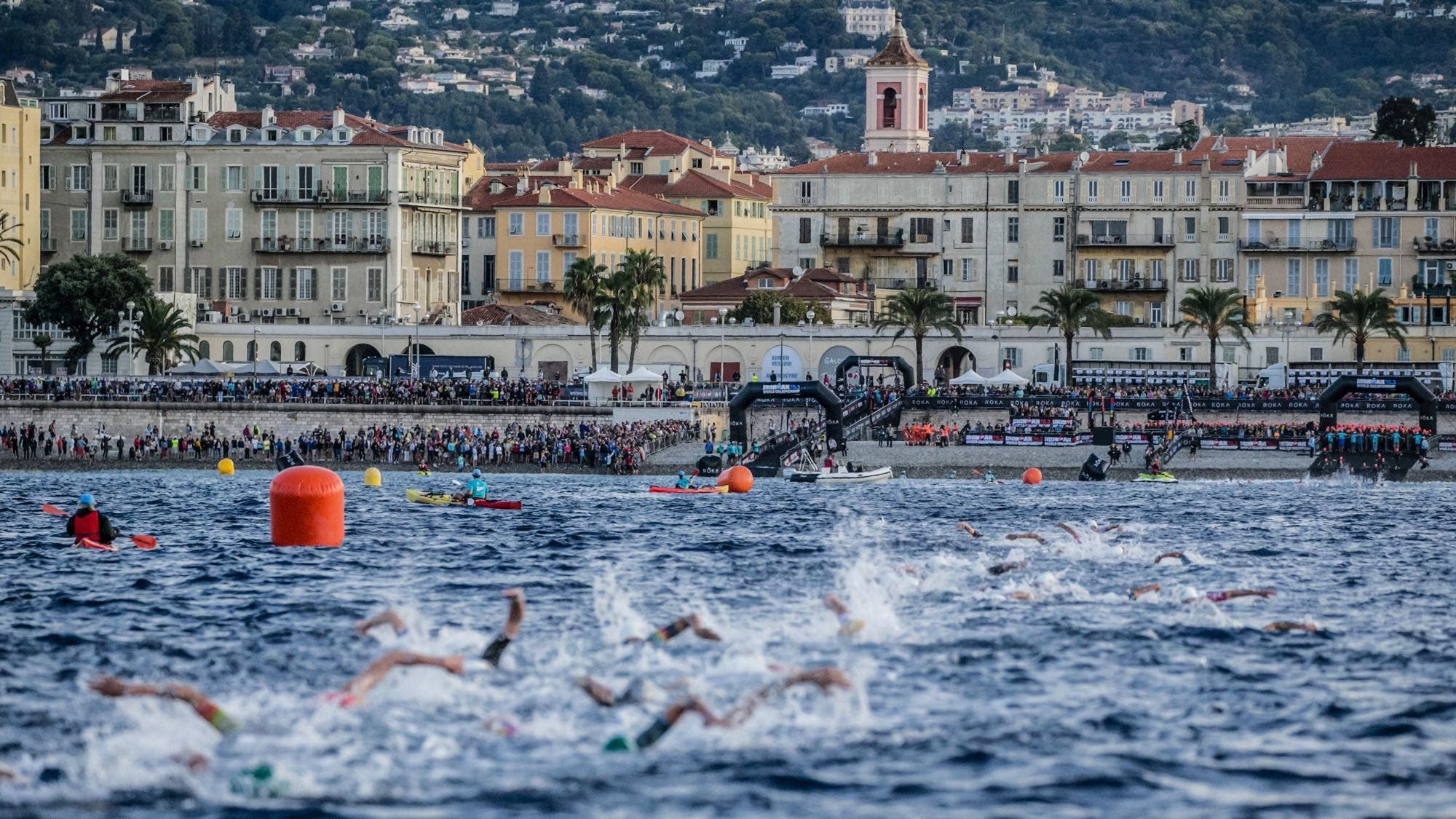Commentary: The World Championship That Everyone Forgets?

(Photo: Nils Nilsen)
Settle in, tri fans, for the world championships that everyone forgets.
That’s not the biggest endorsement for the forthcoming Ironman 70.3 World Championships, but before you shoot this messenger, those aren’t my words.
Instead, they come from triathlon legend Jan Frodeno, who spiced up pre-Kona festivities by claiming that if two-time 70.3 winner Gustav Iden wanted to be included in the pantheon of tri greats, the Norwegian needed to win on the Big Island.
(Spoiler alert: Iden pretty much answered that one.)
But as a label to give to the 70.3 Worlds title, “the world championship that everyone forgets about” (again, Frodeno’s words, not mine) still stings, and particularly so coming from another two-time champion. Let’s not forget Frodeno won this title in 2015 and 2018 – the first in Austria as a stepping stone to Kona glory, the second in South Africa via a three-way knock ‘em down, drag ‘em out contest with Alistair Brownlee and Javier Gomez that took a 66-minute half-marathon to win. It was one of the great races of this – and probably any other – era.
So, what’s Frodo’s issue here?
Perhaps we should cut the German some slack. Aside from one aborted attempt at Challenge Roth, he’s spent more than a year on the sidelines – and he’d love nothing more than to be racing head-to-head with the Norwegians.
But we also have to admit that maybe he’s just a little bit right about this being the world championship everyone forgets.

The Kona-St. George Double
When Triathlete assigned me the task of writing a color piece on the merits of the 70.3 Worlds, my first thought was to answer the question a lot of people asked when they saw the late-October billing for this race: Is it a dumb idea to hold 70.3 Worlds three weeks after Kona?
Well, yes, very probably. Historically, 70.3 Worlds has worked well as an appetizer to the Big Kahuna of Kona. Afterwards, we’re all a bit tri’d out. The energy around Hawaii saps as much as its climate, even more so after a three-year absence and two days of racing. If you watched even one day of racing in Kona, you very likely needed a nap afterwards. Both days? That’s a feat worthy of at least a recovery day.
And that’s just the fans. Goodness knows what the athletes are feeling. Triathlon racing comes thick and fast these days, but sometimes we need to take a deep breath and reset.
That said, maybe we shouldn’t be so quick to assume the athletes aren’t up to the Kona-St. George double. When Fenella Langridge finishes sixth in Kona and then heads to Mallorca to race to the podium the following weekend, it reminds us that the pros are often a species apart when it comes to both performance and recovery.
The Deja Vu Effect
It also might not just be the scheduling, but that once again we’re back in St. George, Utah.
Don’t get me wrong: St. George is a great course. The unique beauty of the red rock backdrop is transfixing, and the southern Utah region is, as we now know, Ironman’s official “Land of Endurance.”
But it’s also starting to feel a bit like Groundhog Day. Four high-profile races here in 16 months – three of them 70.3s – is a bit much. It’ll be refreshing to see the race schlep over to Finland next year, rotating the way it has since 2014.
And yet maybe this distance, and maybe this race, needs more respect. Look at where it’s come from and, more importantly, where it’s headed.

70.3: More Popular than Ironman?
Pros aside, there’s a case to be said that it is now the most popular distance in triathlon, offering a challenge that means you can spend half a day exercising and still have the stomach for a burger, beer and celebration with your mates. Put more clinically, the IV drip count is gratefully diminished.
According to Ironman, approximately 229,000 triathletes participated in 119 70.3 events worldwide this year. Compare that to a decade ago, when 95,000 athletes raced 65 events. Even more are expected to become 70.3 finishers next year, with more than 125 Ironman 70.3 events in over 50 countries slated for 2023. Much of this growth is from women – from 2017 to 2022, there has been an approximately 20% increase in female registrations for IRONMAN 70.3 events.
From a pro perspective, 70.3 racing has also come on leaps and bounds from a first world championship in Clearwater, Florida in 2006 where a pre-Kona fame Craig Alexander took out the men’s race and Canada’s Sam McGlone the women’s.
Moving to Las Vegas (fine, technically it was Henderson, Nevada) for three years was an improvement in “draft reduction” if nothing else. And the decision to then rotate every year until 2022 (when the pandemic made that logistically challenging) was another smart choice. The event has been to Canada, Austria, Australia, South Africa, France, and back to the States twice along the way. The switch to two-day racing from 2018 to give women their own race-day and platform another feather in Ironman’s cap. Bravo.
These decisions have made for some classics along the way – and some truly unforgettable racing.
The 70.3 Worlds We Haven’t Forgotten
On the men’s side, Sebastian Kienle’s scorched earth cycling in 2012 and 2013 was enough to trigger wildfires. In 2014, Spain’s Javier Gomez – at very much peak Gomez – beat Jan Frodeno in Mont Tremblant just a week after winning the ITU world crown in Edmonton. A then-unheralded Lionel Sanders busted through for fourth.
We’ve already mentioned the classic Frodeno-Brownlee-Gomez encounter in 2018, and since then we’ve had two exhibitions from our new Ironman champion Gustav Iden, the first a surprise, the second a shoo-in, both times wearing that ever-so-lucky hat.
For the women, there have been some equally compelling storylines. The 70.3 Worlds roll call from the early years includes such luminaries as Mirinda Carfrae, Julie Dibens, Jodie Swallow (now Cunnama), Leanda Cave and two-time champ Mellisa Hauschildt (nee Rollinson).
In 2014, the Daniela Ryf Show began its run, with five of six championships going the way of the Swiss – the win in Zell am See-Kaprun in 2015 by a ridiculous 11 minutes over Heather Wurtele. Good g-Ryf! Ryf’s success during that time was punctuated only by victory for an ecstatic Holly Lawrence in 2016 in Mooloolaba, where she had a smile to match the sunshine on Australia’s east coast.
Then last year, having finished second to Ryf in 2018 in South Africa (and Kona) and seeing her 2019 hopes dashed through a drafting penalty in Nice, Lucy Charles-Barclay finally brought home her first world title in St. George with one of the most comprehensive gun-to-tape victories the sport has seen.
If the point hasn’t been landed, the racing has and will be epic this year. The excitement train is rolling, and there’s no stopping it.
2022 70.3 Worlds: The Storylines
The Norwegians, of course, are heavy favorites in the men’s race. Will it be Iden for the “threepeat,” or is Blummenfelt – who looked fried in Kona – out to get revenge? Blu feels his training buddy can turn a little “lazy” after a big win. Certainly, these two will force each other – and everyone else – to step up their game.
What about those who have kept their powder dry for this race? Yo, yo, yo, we’re talking about Sam Long, who skipped Kona specifically to focus on this race. He was second here last year – twice, in fact, having lost to Sanders in a sprint for the ages months earlier. Who is fresh? Who is f***d? Tri fans should be buzzed to find out.
As for the women, there’s no Ashleigh Gentle in the mix, who has been dominating the PTO 100k scene this year. She decided to prioritize her wedding (probably fair). But there are plenty of athletes waiting in the wings to step into the role of ruckus-maker. The specialists such as Lawrence, Emma Pallant-Browne or Paula Findlay will all be clamoring to take down the defending champion. But what if Charles-Barclay pulls off the win? What a story that would be after her injury woes earlier this year.
What about the tranche of American women, from Jackie Hering to Taylor Knibb? Knibb, after all, is the one woman with the potential to bike so fast she ruins it as a spectacle. And we can’t forget Olympic champion Flora Duffy, who was given a wild card entry by Ironman after her bike failed to show in Mont Tremblant.
As we’ve seen with the million-dollar PTO races earlier this year, you’d be a fool to write anyone off.
The women go on Friday, the men on Saturday.
Clear your calendar, get your snacks. The stage is set, and the world championship that everyone forgets is about to deliver something unforgettable.
Free live coverage of the Ironman 70.3 World Championships in St. George will air exclusively on Outside Watch October 28 and 29. Outside+ Members will also be able to watch the race coverage on demand after the conclusion of the event.